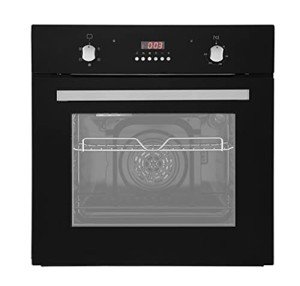Ten Startups That Will Revolutionize The Built In Oven Industry For The Better
The Ultimate Guide to Buying a Built-In Oven
In the realm of modern cooking appliances, built-in ovens stand apart for their seamless integration into kitchen cabinetry, aesthetic appeal, and advanced cooking innovations. They provide a huge selection of functions and a streamlined design, accommodating both cooking enthusiasts and daily cooks. However, choosing the best built-in oven can be overwhelming provided the wide range of choices available in the market. This article works as an extensive guide, highlighting key factors to consider when purchasing a built-in oven, popular features, and answers to regularly asked questions (FAQs).
Why Choose a Built-In Oven?
Built-in ovens provide many benefits, including:
- Space Efficiency: They are created to fit into existing cabinetry, optimizing kitchen space.
- Visual Appeal: With a range of designs and surfaces, built-in ovens boost the total appearance of a kitchen.
- Advanced Features: Many come equipped with advanced innovation, making cooking much easier and more precise.
- Modification: Built-in ovens can be installed at eye level or below counter height, using flexibility based on individual choice.
Key Considerations When Buying a Built-In Oven
Here are necessary aspects to think about before making a purchase:
1. Size and Dimensions
Before choosing a built-in oven, it is important to determine the offered space. Requirement built-in ovens usually fall into 2 primary categories:
Oven Size
External Dimensions
Internal Capacity
Single
24-30 inches large
3-5 cubic feet
Double
30-36 inches large
5-10 cubic feet
Make sure that the selected design fits your cabinetry both in width and height.
2. Kind of Oven
Built-in ovens come in various types, including:
- Conventional Ovens: Uses heating aspects above and below for basic baking and roasting.
- Convection Ovens: Employs a fan to flow hot air, supplying even cooking.
- Wall Ovens: Installed vertically at eye level for much easier gain access to.
- Steam Ovens: Uses steam to cook food, protecting nutrients and moisture.
3. Fuel Type
Built-in ovens are readily available in various fuel types:
- Electric: Often warms more equally, ideal for baking.
- Gas: Offers instant temperature control, great for roasting and broiling.
- Dual Fuel: Combines the best of both worlds with a gas cooktop and electric oven.
4. Features and Technology
Modern built-in ovens included a myriad of functions that boost the cooking experience:
- Smart Technology: WiFi-enabled models allow users to manage the oven remotely by means of an app.
- Self-Cleaning: Reduces the effort needed to keep a clean oven.
- Postpone Start: Lets you program the oven to start cooking at an established time.
- Numerous Cooking Modes: Options for baking, broiling, roasting, and more.
5. Brand and Price
Selecting a respectable brand can ensure quality and dependability. Comparative prices amongst various brands can assistant in decision-making. Here's a short introduction of popular brands and their rate ranges:
Brand
Avg. Rate Range
Significant Features
Bosch
₤ 1,000 – ₤ 3,000
Streamlined design, reliable efficiency
Whirlpool
₤ 800 – ₤ 2,500
Easy to use controls
KitchenAid
₤ 1,200 – ₤ 3,500
Innovative functions, trendy designs
GE Appliances
₤ 900 – ₤ 2,800
Variety of sizes and alternatives
Installation Considerations
Setup of a built-in oven is a key element that needs to not be neglected. It's extremely recommended to hire an expert when installing a built-in oven. They can address electrical or gas line problems and guarantee that the oven is fitted safely in the cabinets.
Upkeep Tips
Preserving a built-in oven is necessary to prolong its life expectancy and performance.
- Clean Regularly: Wipe down surfaces and avoid letting spills end up being baked-on.
- Usage Appropriate Cookware: This prevents damage to interior surfaces and boosts cooking efficiency.
- Check Seals: Inspect the door seals routinely for wear and tear to keep energy performance.
Frequently Asked Questions About Built-In Ovens
1. How do I know which size built-in oven to buy?
Measure the space you have readily available and compare it to the oven measurements. Standard sizes usually range from 24 to 30 inches for single ovens.
2. Can I install a built-in oven myself?
While it's possible to set up a built-in oven without professional help, hiring an experienced professional is suggested for security, particularly with gas or electrical connections.
3. What is Ovens And Hobs -span of a built-in oven?
Generally, built-in ovens last about 10-15 years with appropriate maintenance.
4. Are built-in ovens energy effective?
Energy effectiveness varies by model. Try to find energy rankings or environment-friendly functions when selecting an oven.
5. Do built-in ovens need special cabinetry?
Yes, they are designed to fit particular cabinetry sizes. Guarantee the cabinetry is built to accommodate the wanted oven's measurements.
A built-in oven is an excellent financial investment that can considerably improve your cooking experience and kitchen visual. With different sizes, types, and advanced functions, comprehending your requirements and preferences is vital for making the ideal choice. By considering measurements, fuel type, and brand reputation, you can confidently pick a built-in oven tailored to your way of life. Ultimately, a well-chosen built-in oven will not just raise your culinary abilities but likewise function as a stunning focal point in your kitchen for several years to come.
